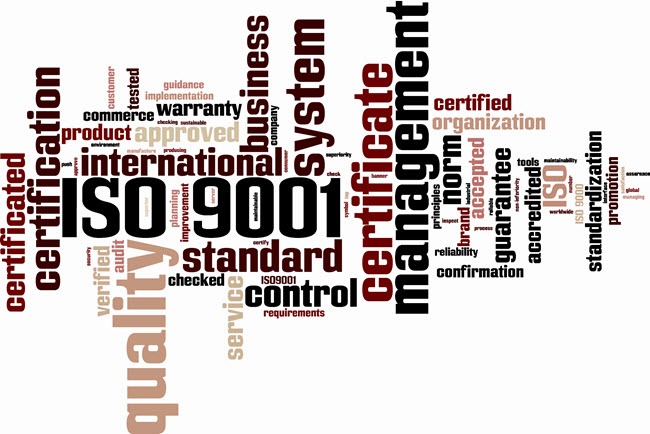An ISO 9001 Quality Management System is customer focused, and looks for ways to improve the quality and value that customers receive. It aims to reduce waste and continuously drive to optimise the business. Rather than simply being a collection of documentation, a QMS is the full management system, although the documentation is an important aspect. If you intend to apply for ISO accreditation, then you will need conduct gap analyses, determine areas for improvement, and you will need to implement changes across the company as needed.
Customer Focused
The customer should always be central to any quality management system. Its aim is to improve the quality or value that you offer to clients and customers. The first stage in developing a quality management system is to highlight the needs and requirements of the client. Once these needs have been identified, it is down to management to determine whether the current systems and organisational structure can meet those needs. The QMS should then go on to identify processes and areas where improvements can be made while also setting out the basic standards.
No Perfect State
One of the key foundations of an effective QMS is the identification that there is no perfect state. This means that the system should identify areas where improvements can be made. As such, it should be easy to conduct further risk assessment and risk analysis, and it should be possible to expand and improve on the system.
Waste Reduction and Resource Optimisation
A QMS will ensure that processes and procedures are optimised, and this creates an optimised operating environment. As well as ensuring that customers get the best possible service, this optimal environment ensures that waste is reduced and that resource usage is optimised. Reduced costs and waste means that operating costs are reduced and, as well as meaning that you can potentially reduce prices for your buyers, it also means that your business revenue and profits will also increase.
Management and Structural Support
Any improvements and changes need to have managerial and structural support. This means that the appropriate resources are given to processes. It also means that training and education can be provided to those involved in production. Implementing changes and sticking to a structured plan requires involvement from all employees and from all departments. Without managerial support this can be challenging. QMS documentation should also include managerial commentary, although this is one area that is often overlooked.
Transparent
A QMS needs to be transparent. It needs to be easy to follow, should highlight the reasons for using certain procedures and implementing specific policies. It should clearly identify responsibilities and roles, and the documentation that accompanies the quality system should be legible, easily accessible, and it should include scope for changes. A closed system, or one that isn’t transparent to all that use it, will be ineffective and could cause more problems than it solves.
Data Collection
At its heart, a QMS is a system that aims to improve procedural processes based on reliable data and evidence. This means gathering relevant data, and it also means effectively analysing it. Data such as customer satisfaction levels can be difficult to measure, but it isn’t impossible. An organisation can measure data such as the number of returned purchases, repeat custom, and they can directly ask customers to fill in satisfaction surveys. Other data, such as those related to waste and material costs, should be easy to measure and can further help analyse performance. A business can also measure more serious failures to meet quality standards. Lawsuits and legal actions, as well as any change in quality regulations and requirements set out by government bodies and regulatory bodies.
The data you collect is not only used to measure performance and results. It can also be used for quality risk assessment. Risk assessment should be used whenever you are considering new actions and processes, or if you intend to make changes to the QMS.
Full and Up To Date Documentation
The introduction of mass production saw a shift in production processes. Prior to the mass production line, a single person was usually responsible for every stage of production. Mass production saw teams of people working on a single product, with different people or different groups being involved in different stages. This had the potential to greatly improve quality in production, but it also introduced the possibility of errors and waste occurring at the steps where changeover occurred.
Henry Ford recognised the importance of standardising designs and also in ensuring the quality of all the components that were used. Quality was measured via a quality control department, who were responsible for a visual check of the product to catch any errors or mistakes. Although statistical control was later added, and techniques have changed, a Quality Management System essentially has the same goals and the same purpose as it would have in Ford’s factories.
The Role of The Quality Management System
A Quality Management System has the primary goal of improving the customer experience. This type of system can be used for companies that manufacture and sell products, but also for service providers. Companies of any size can benefit from the implementation of this type of system, but it needs to be transparent, should include all relevant members of the company, and should include managerial and training staff too. The documentation is an important element of quality management, and it is required for ISO accreditation. However, this is only a part of the system and procedure.
A well thought out and intelligently implemented system helps ensure that all team members know exactly what is required of them and the process that they need to follow. It also identifies any training that is needed, and it also identifies areas where continuous improvement can be made.






